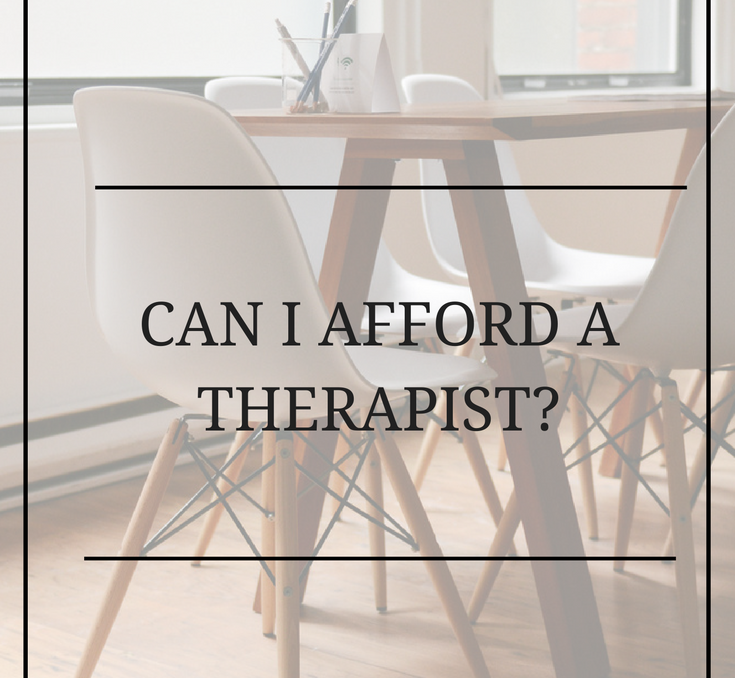 Why would I spend the rest of my days unhappy
Why would I spend the rest of my days unhappy
Why would I spend the rest of this year alone
When I can go therapy
When I can go therapy
When I can go therapy two times a day
~lyrics from “Therapy” by Mary J Blige
One thing many minorities do not do, and may shame others for doing, is going to see a therapist. In the Black community it is perceived as something “white folks do” or something “crazy” people do. Coming from a Black woman that has had 3 different therapist within a 7-year period, it was THE BEST decision I have ever made. I encourage everyone to see a therapist. However, seeing a therapist isn’t free and sometimes not cheap. When I had insurance I paid $20 per session, twice a month-Very manageable. A good friend told me she had pay $50 per session and going twice a month wasn’t in her budget; she quit going. People often ask me questions about going to a therapist, outside of how to find one, how can I afford one is the second most common question.
YES! You can afford a therapist, and here is how:
Review the benefits from your employer
If your employer offers health insurance they more than likely have an “Employee Assistance Program” of some sort (the name of the program may vary by employer). The program offers free or deeply discounted services for life events. Examples include non-work related legal assistance, help with substance abuse, financial advice, and support for emotional distress. One call to your company’s EAP provider and after answering a few general questions they can provide you with a list of therapist they work with. The benefit is your employer covers the cost of a certain amount of sessions (my previous employers have covered the first 3, while another covered 5) and then you are responsible for the session. This was helpful when I first started going to a therapist because I didn’t know the value of one. Also, I also wasn’t sure how to select one, so the fact that all of my “free sessions” didn’t have to be with the same person was great!, If I wasn’t comfortable with one, I could try out the next. On the flipside, if I found one I liked the I got free sessions!
In addition to EAP many employers offer Flexible Spending Accounts. Depending on your employer it may be listed as FSA, HSA, or HRA. While they vary slightly, they function pretty much the same. Here is a quick overview of it works:
*During open enrollment determine how much you want to have for health related expenses. As a single individual I typically selected $500-$1000 (this is pre-tax money), depending if I was in therapy or wanted new eye glasses.
*Depending on the program, you may receive a debit card in the mail. Once activated it can be used for doctor/dental copays, out of network cost, prescriptions, and some medical items. The money comes directly from your FSA. If you do not get debit card, you will have to pay up front, save the receipt, and submit it for reimbursement. It may seem like a lot to do, but is i fairly easy, and it can be deposited right into your bank account.
*Know your dates. Most programs allow you submit receipts by March of the following year, but be aware of the exact date. Also know the last day you can spend fund, some programs offer rollover for unused funds other are “use it or lose it”.
Contact therapist in your area, I suggest beginning with a LCSW vs. PhD, and ask if they have a sliding fee scale. Some medical professionals do not take insurance because of the difficulty in processing insurance some claims. Those that do not accept insurance will often have a reasonable cash price or use a sliding scale fee. The sliding scale fee allows a doctor to adjusting the cost of services based on the patient’s ability to pay. Also ask your therapist for homework or to recommend a book. If you can only go twice a month or monthly vs. weekly, having things to work on or read will help you until the next session.
Finally, if you have a specific issue you are dealing with look for a support group. It is not the same as one on one therapy, however it is a start. While in Atlanta, my mother got back on her meds and I was having trouble adjusting to the back and forth or her on and off her medication for schizophrenia. I found out that NAMI, National Alliance on Mental Illness, offered a Family-to-Family class for those that have a mentally ill family member. I am confident that the class did more for me than any therapist could have, and the class was FREE! Helping others, I have found support groups for people with OCD, Grief Support Groups, and single parent support groups. Even though are very informal, having someone to talk to that can relate to your issue, is a great feeling.
Keep this in mind: If you needed physical therapy you would research physical therapist and find a way to pay for it. The same should apply to your mental therapy.
[info_box type=”alert_box”]Caring for yourself including takes care of your finances. I encourage all ladies who are serious about self-care to go on The Happy Finances Challenge. In 42 days you can learn to make money decisions that will lead to long-term financial happiness. [/info_box]